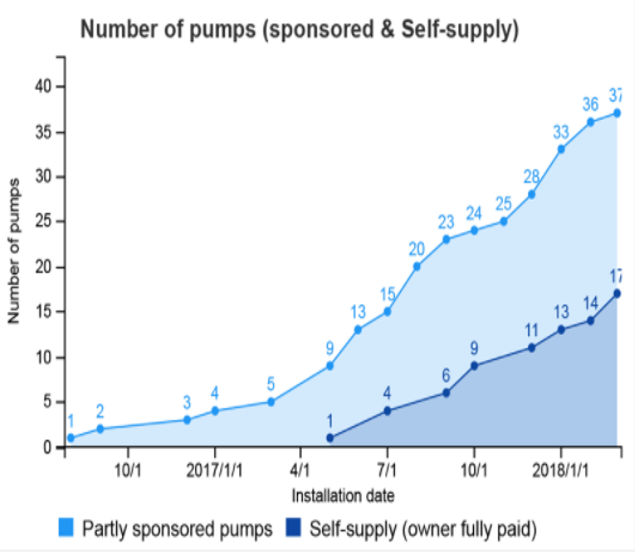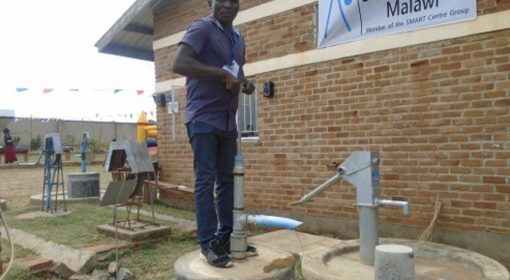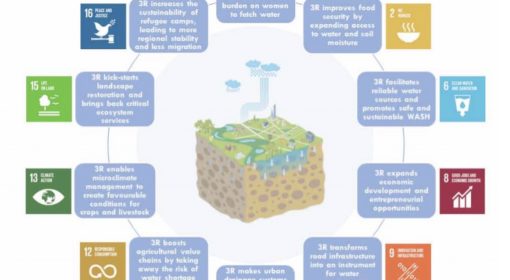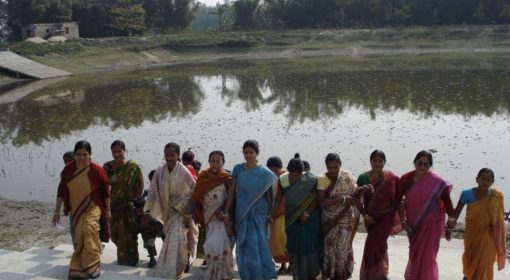Posted by Mekdelawit Deribe, with inputs from Henk Holtslag and Rik Haanen
August 17, ,2018

‘SMART’ technology that can constitute supported self-supply systems
In recent years there has been a shift in the way NGOs and other organizations working on rural development projects such as WASH operate. A shift from community-supply to self-supply is observed in many places.
Community-supply involves setting up relatively large, accessible, and expensive facilities to cater to many families or a community. Because of the higher access these communal facilities offer, they usually involve high operation and maintenance costs. The technology behind these communal facilities is usually not simple. Hence maintenance of these facilities is usually beyond the means and capacity of the community. These facilities are also typically too expensive for individual families to own and hence the community ownership. However, experience has shown that there is a lack of a strong sense of ownership in a community as nobody takes responsibility. This results in facilities not being cared for and maintained which eventually renders them non-functional.
All these issues pushed for a change; a shift to self-supply.
Self-supply refers to a scheme where the users invest in the facilities they use. This usually happens at the family-level. Sometimes families are not able to invest entirely on their own, and that is when the concept of “supported self-supply” comes into play. NGOs cover part of the investment cost as a subsidy to the user while the users/families contribute the rest. Supported/self-supply enables NGOs to reach more people with the limited budget they have as they (NGOs) do not pay for the whole investment. In addition, since users invest themselves in the facilities they use, there is a stronger sense of ownership.
The concept of self-supply usually applies to low-cost measures which cater to families. This implies that the technologies/facilities are designed for small scale use and are not expensive like the high-access community supplies. Operation and maintenance of these technologies can also be done easily by families. For example, a family can invest in a simple rope pump. It is a low cost and simple technology which offers potable water to families by tapping into shallow ground water reserves. The only part of the rope pump that needs regular maintenance is the rope, which the family is able to change after a simple training. The use of family wells established through self-supply is not limited to individual families. Usually family wells are shared with 20-40 people which translates to around 10 families.nowledge transfer from NGOs to the local population on simple technologies will create demand for such technologies. Consequently, it will create a market and supply chains.
Demand for supported self-supply systems has been rising steadily (stats of pumps installed by Jacana SMART Centre Zambia)
The SMART Center Group (http://smartcentregroup.com/) promotes self-supply in the WaSH sector in many African countries. Local entrepreneurs are created by imparting knowledge of SMART i.e. simple, market-based, affordable and repairable technologies. The Jacana SMART Center in Zambia (http://www.smartcentrezambia.com/) for example trains local welders and drillers in manufacturing Rope Pumps using local materials, and in how to manually drill bore holes. A year later, the welders and the drillers started selling their products directly, without needing support of the SMART centre or NGOs.
Self -supply offers five main advantages:
- It can offer improved water source and better sanitation and hygiene to more people with a limited budget.
- It can ensure food security at the family-level.
- It results in a significant time saving for families as it provides water closer to their homes.
- It results in economic development of families as families can offer/sell water to their neighbors.
- It improves the local economy by creating local supply chains for SMART technologies
For self-supply to be successful, families need to be trained to make, operate and maintain SMART techs. Constant follow up and trainings can ensure quality of products and support local entrepreneurs. The long-term plan would be that when NGOs are no longer working in the area, these entrepreneurs will keep on expanding their work and serving the community. This way sustainable change in communities can be ensured.
{jcomments on}




